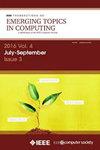GLAMP: Generative Learning for Adversarially-Robust Malware Prediction
IF 5.4
2区 计算机科学
Q1 COMPUTER SCIENCE, INFORMATION SYSTEMS
IEEE Transactions on Emerging Topics in Computing
Pub Date : 2025-07-10
DOI:10.1109/TETC.2025.3583872
引用次数: 0
Abstract
We propose a novel Generative Malware Defense strategy. When an antivirus company detects a malware sample生成学习用于对抗鲁棒性恶意软件预测
我们提出了一种新的生成式恶意软件防御策略。当反病毒公司检测到恶意软件样本$m$时,他们应该:(i)由$m$的几个变体生成一个集${Var}(m)$,然后(ii)在用${Var}(m)$增强的常规训练集上训练他们的恶意软件分类器。我们相信,通过使分类器对攻击者开发的未来恶意软件更加健壮,这将导致更主动的防御。我们将恶意软件生成问题正式定义为一个非传统的优化问题。我们新颖的GLAMP(生成学习对抗鲁棒恶意软件预测)框架分析了恶意软件生成问题的复杂性,并包括利用复杂性结果的新型恶意软件变体生成算法(i)。我们的实验表明,GLAMP生成的足够大百分比的样本能够逃避商业反病毒和机器学习分类器,逃避率分别高达83.81%和50.54%。然后,GLAMP也提出了一个对抗训练模型。我们的实验表明,GLAMP生成的运行恶意软件可以逃避11个白盒分类器和4个商业(即黑匣子)检测器。我们的实验表明,根据所使用的测试集,GLAMP最好的对抗性训练引擎将召回率提高了16.1%,F1分数提高了2.4%-5.4%。
本文章由计算机程序翻译,如有差异,请以英文原文为准。
求助全文
约1分钟内获得全文
求助全文
来源期刊

IEEE Transactions on Emerging Topics in Computing
Computer Science-Computer Science (miscellaneous)
CiteScore
12.10
自引率
5.10%
发文量
113
期刊介绍:
IEEE Transactions on Emerging Topics in Computing publishes papers on emerging aspects of computer science, computing technology, and computing applications not currently covered by other IEEE Computer Society Transactions. Some examples of emerging topics in computing include: IT for Green, Synthetic and organic computing structures and systems, Advanced analytics, Social/occupational computing, Location-based/client computer systems, Morphic computer design, Electronic game systems, & Health-care IT.
 求助内容:
求助内容: 应助结果提醒方式:
应助结果提醒方式:


